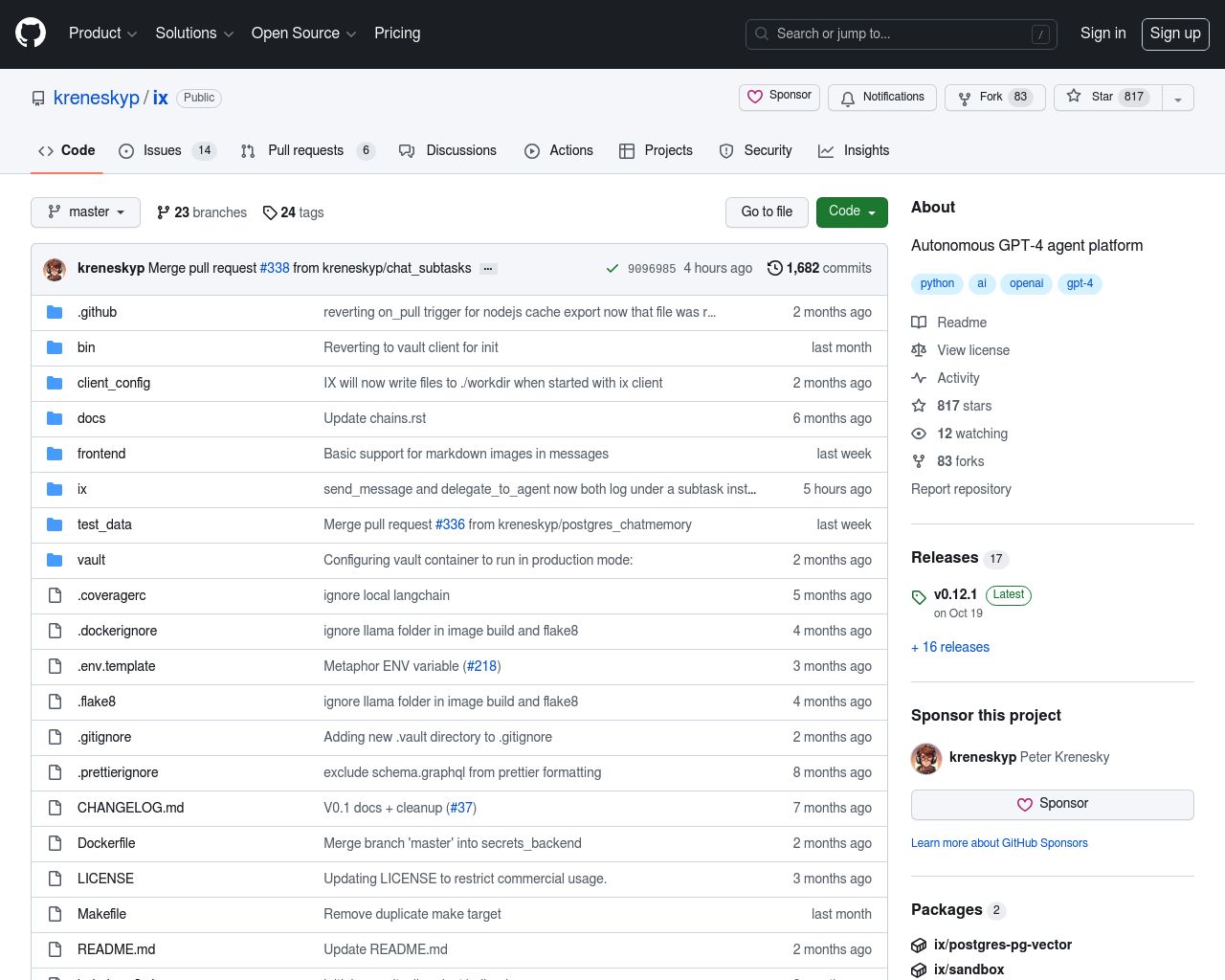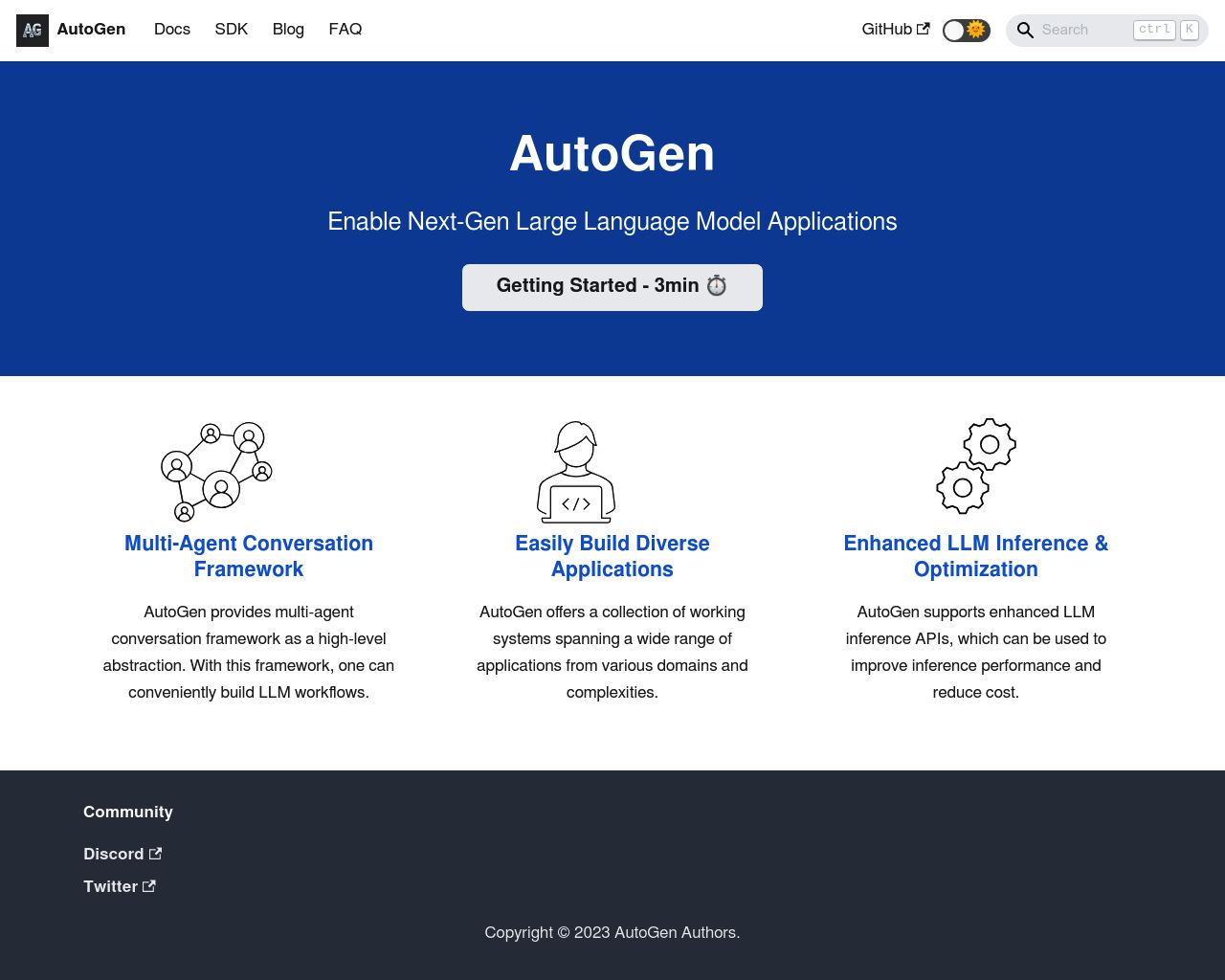IX And AutoGen – A Detailed Comparison
AI agent development platforms Agent iX and AutoGen offer innovative approaches to harnessing the power of large language models (LLMs). Agent iX simplifies AI deployment with its no-code editor and scalable infrastructure, while AutoGen empowers developers with multi-agent conversations and enhanced LLM inference. This comparison explores their unique features, strengths, and limitations, revealing how SmythOS emerges as a superior alternative by combining user-friendly visual design with powerful customization options. We’ll examine core components, security features, and deployment flexibility to help developers, business leaders, and AI enthusiasts make informed decisions about the best platform for their AI agent needs.
Agent iX Overview
Agent iX revolutionizes AI agent development with its open-source platform for creating, hosting, and managing autonomous and semi-autonomous LLM-powered agents. The platform excels in deploying scalable AI solutions across various environments, from development to production.
At the core of Agent iX lies a powerful no-code editor, enabling users to craft sophisticated AI agents visually by connecting nodes in a graph. This intuitive interface democratizes AI development, allowing both seasoned developers and non-technical users to build complex AI systems without extensive programming knowledge. The platform’s support for multiple AI models, including OpenAI, Google PaLM, Anthropic, and Llama, provides flexibility in choosing the most suitable foundation for specific use cases.
Agent iX revolutionizes AI agent development with its open-source platform for creating, hosting, and managing autonomous and semi-autonomous LLM-powered agents.


Agent iX stands out with its robust multi-agent collaboration features. The platform enables teams of AI agents to work together, communicating and sharing knowledge to tackle complex tasks efficiently. This collaborative approach opens up new possibilities for problem-solving and automation across various industries. From QA chatbots and code generation to data extraction and analysis, Agent iX-powered agents can handle a wide array of tasks with impressive autonomy.
Scalability forms a cornerstone of Agent iX’s design philosophy. The platform utilizes a message queue-driven backend, allowing for horizontal scaling to support numerous agents operating in parallel. This architecture ensures that as workloads grow, Agent iX can adapt seamlessly, maintaining performance and responsiveness even under demanding conditions.
Scalability forms a cornerstone of Agent iX’s design philosophy. The platform utilizes a message queue-driven backend, allowing for horizontal scaling to support numerous agents operating in parallel.
While Agent iX offers a powerful suite of features, it’s worth noting that some advanced functionalities commonly found in enterprise-grade solutions, such as detailed audit logs, advanced memory management, and built-in explainability tools, are not explicitly mentioned in the platform’s documentation. However, the open-source nature of Agent iX provides opportunities for community-driven enhancements and customizations to address specific needs.
AutoGen Overview
AutoGen empowers developers to build sophisticated Large Language Model (LLM) applications using multi-agent conversations. This open-source framework enables the creation of customizable, conversable agents that interact with each other, LLMs, tools, and humans to tackle complex tasks.


AutoGen’s core strength lies in its multi-agent conversation capabilities. These agents collaborate autonomously or with human input, adapting to diverse use cases. The framework maximizes LLM performance through enhanced inference features like tuning, caching, and error handling. This optimization proves crucial when working with resource-intensive models such as GPT-4.
AutoGen empowers developers to build sophisticated Large Language Model (LLM) applications using multi-agent conversations.
Developers can tailor AutoGen’s agents to specific tasks, integrating LLMs, human inputs, and various tools. The platform supports both fully autonomous operations and human-in-the-loop problem-solving, offering flexibility for applications requiring human oversight. AutoGen has demonstrated effectiveness across a wide range of applications, from automated task solving and code generation to continual learning and complex problem-solving in group chats.
For developers, AutoGen provides essential debugging tools and logging functionalities for API calls, facilitating diagnosis and optimization of LLM-based systems. The framework also includes EcoOptiGen, a cost-effective technique for tuning large language models, underlining its focus on enhancing LLM efficiency and effectiveness.
While AutoGen offers powerful capabilities, it may present a steeper learning curve for non-technical users compared to some visual-based platforms. Its open-source nature provides flexibility but might require more setup and configuration than fully managed solutions. As with any framework centered on LLMs, users should be mindful of potential challenges related to model bias and the need for high-quality training data.
Feature Comparison
Agent iX and AutoGen offer distinct approaches to AI agent development, with notable feature gaps in core components and security. Agent iX provides a user-friendly no-code editor for visual agent creation, enabling rapid prototyping and deployment. AutoGen, in contrast, focuses on multi-agent conversations and enhanced LLM inference, catering to more technical users comfortable with coding.
In terms of core components, Agent iX excels with its intuitive drag-and-drop interface and pre-built API integrations, making it accessible to users with limited programming experience. AutoGen lacks a visual builder but compensates with powerful customization options for developers who prefer code-based solutions. This gap highlights the platforms’ divergent approaches to user empowerment.
Regarding security features, neither platform prominently advertises advanced encryption or detailed audit logs. However, AutoGen’s framework design allows for greater customization of security measures, potentially giving it an edge for enterprises with specific compliance needs. Agent iX’s managed infrastructure may offer built-in security benefits, but the lack of explicit security features represents a notable gap compared to more comprehensive enterprise solutions.
Feature Comparison Table
| Agent iX | AutoGen | SmythOS | |
|---|---|---|---|
| CORE FEATURES | |||
| Visual Builder | ✅ | ❌ | ✅ |
| No-Code Options | ✅ | ❌ | ✅ |
| Memory & Context | ❌ | ✅ | ✅ |
| Explainability & Transparency | ❌ | ✅ | ✅ |
| Audit Logs for Analytics | ❌ | ✅ | ✅ |
| Agent Work Scheduler | ✅ | ❌ | ✅ |
| SECURITY | |||
| Constrained Alignment | ❌ | ❌ | ✅ |
| IP Control | ✅ | ❌ | ✅ |
| COMPONENTS | |||
| Data Lakes | ❌ | ❌ | ✅ |
| DEPLOYMENT OPTIONS (EMBODIMENTS) | |||
| Staging Domains | ❌ | ❌ | ✅ |
| Production Domains | ✅ | ❌ | ✅ |
| Deploy as Scheduled Agent | ❌ | ❌ | ✅ |
| DATA LAKE SUPPORT | |||
| Hosted Vector Database | ✅ | ❌ | ✅ |
| Sitemap Crawler | ❌ | ❌ | ✅ |
| YouTube Transcript Crawler | ❌ | ❌ | ✅ |
Best Alternative to Agent iX and AutoGen
SmythOS stands out as the superior alternative to Agent iX and AutoGen for AI agent development and deployment. Our platform combines powerful capabilities with unparalleled ease of use, making advanced AI accessible to users of all skill levels.
We offer a comprehensive visual builder that surpasses both Agent iX and AutoGen. Our intuitive drag-and-drop interface allows rapid prototyping and deployment of complex AI workflows without writing code. This visual approach accelerates development and empowers non-technical users to create sophisticated AI agents.
SmythOS stands out as the superior alternative to Agent iX and AutoGen for AI agent development and deployment. Our platform combines powerful capabilities with unparalleled ease of use…
Unlike Agent iX and AutoGen, SmythOS provides seamless scalability from development to production. We support multiple environments, including staging and production domains, ensuring smooth transitions as projects grow. Our platform also excels in security, with features like constrained alignment and IP control that are absent in Agent iX and AutoGen.
SmythOS boasts an extensive feature set that outshines the competition. We offer advanced capabilities like a hosted vector database, sitemap crawler, and YouTube transcript crawler — tools not found in Agent iX or AutoGen. These features, combined with our support for various data formats and deployment options, provide unmatched versatility for AI agent creation.
By choosing SmythOS, users gain access to a platform that not only matches but exceeds the capabilities of Agent iX and AutoGen. Our commitment to user-friendly design, robust features, and scalable solutions makes SmythOS the ideal choice for businesses and developers looking to harness the full potential of AI agents.
Conclusion
Agent iX and AutoGen offer unique approaches to AI agent development, each with its strengths. Agent iX’s no-code editor and scalable infrastructure make it accessible for rapid prototyping and deployment. AutoGen’s focus on multi-agent conversations and enhanced LLM inference caters to developers seeking deep customization.
However, SmythOS emerges as the superior choice, combining the best of both worlds and addressing key limitations. Our platform’s intuitive visual builder rivals Agent iX’s ease of use while offering the flexibility and power that AutoGen users expect. SmythOS excels in multi-agent collaboration, seamless API integrations, and enterprise-grade security features often missing in open-source alternatives.
SmythOS stands out with its unparalleled deployment options, allowing users to create AI agents once and deploy them anywhere – from chatbots and APIs to scheduled tasks and GPT plugins. This versatility, combined with our robust data handling capabilities and support for a wide range of AI models, positions SmythOS as the ideal solution for businesses seeking to harness AI’s full potential.
To experience the future of AI agent development, we invite you to explore our diverse range of AI-powered agent templates. These templates cover multiple business categories and offer a glimpse into the transformative power of SmythOS. Ready to take the next step? Create a free SmythOS account and start building your own AI agents today – no credit card required, with a generous free tier and a 30-day money-back guarantee on paid plans. Unleash the power of AI for your business and join the SmythOS revolution in workforce automation.
Last updated:
Disclaimer: The information presented in this article is for general informational purposes only and is provided as is. While we strive to keep the content up-to-date and accurate, we make no representations or warranties of any kind, express or implied, about the completeness, accuracy, reliability, suitability, or availability of the information contained in this article.
Any reliance you place on such information is strictly at your own risk. We reserve the right to make additions, deletions, or modifications to the contents of this article at any time without prior notice.
In no event will we be liable for any loss or damage including without limitation, indirect or consequential loss or damage, or any loss or damage whatsoever arising from loss of data, profits, or any other loss not specified herein arising out of, or in connection with, the use of this article.
Despite our best efforts, this article may contain oversights, errors, or omissions. If you notice any inaccuracies or have concerns about the content, please report them through our content feedback form. Your input helps us maintain the quality and reliability of our information.
